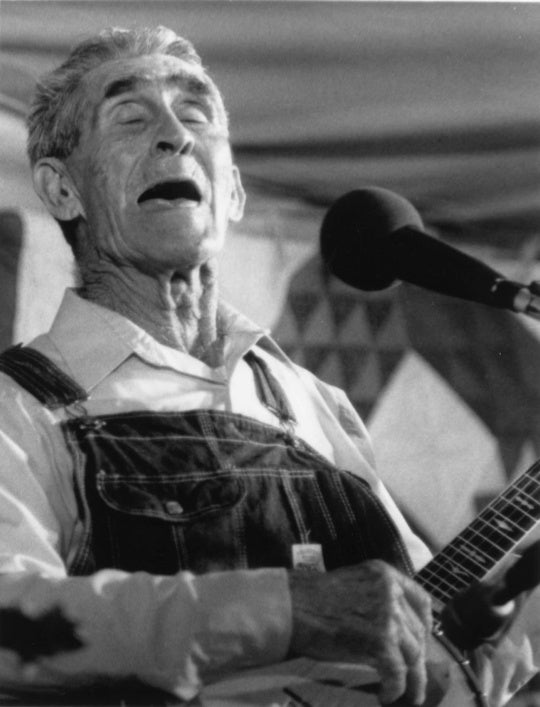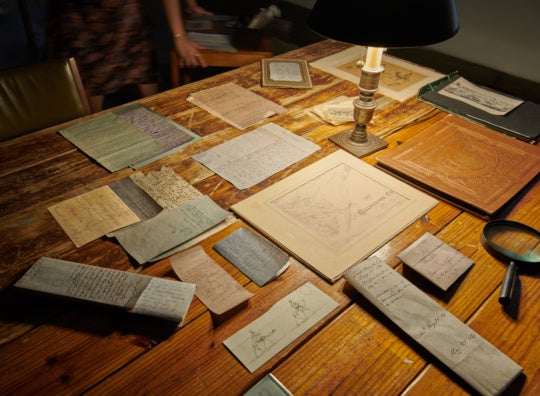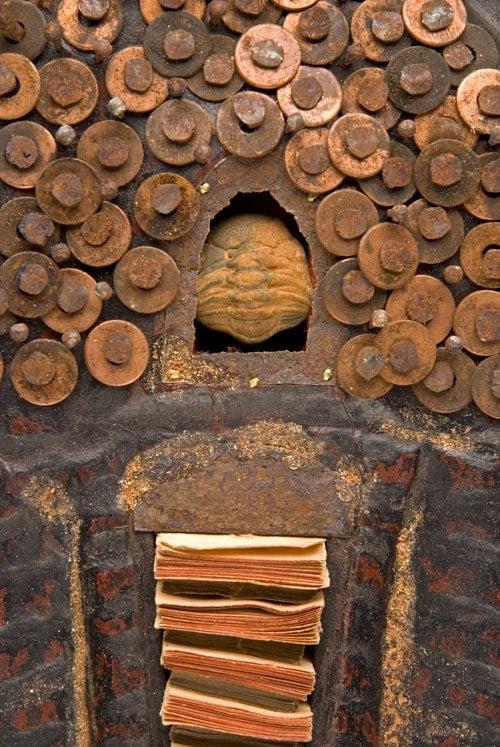
Someone wandering through the High Museum who happened unexpectedly upon the exhibition “Sprawl! Drawing Outside the Lines” would, I think, be struck foremost by the variety of stuff on display. The works are so varied in technique, subject matter, and effect that, without knowing the guiding curatorial principle, a viewer would be hard-pressed to guess that there even was one.
There’s an insanely energetic, unsettled, and exploratory quality to “Sprawl,” which consists of new work by contemporary Metro Atlanta artists recently acquired for the High’s permanent collection. The subtitle of the show includes the word “drawing” but the works sprawl inexorably to include nearly every technique that can be applied to paper: from watercolor and oil painting to printing, collage, and photography. Some are studies for works in other media, and there’s even a plainly sculptural work, Untitled (Line Study) by Hannah Israel, made of so much graphite on paper that the piece stands upright on its own, a fitting play on the notion of what might qualify as a “drawing.”
Organized by the High’s modern and contemporary curator Michael Rooks, it’s an exhibition that shares many of the same qualities with the city itself: sprawling for sure, but also industrious and boisterous, with bizarre, almost schizophrenic moods. Not really a community at all, these artists share little more than geographical proximity. It’s a quality that’s often derided in the city itself, but found here in the art, it’s refreshing.
Choosing a representative image for the show would understandably be a difficult task, but Paper Frank’s irreverent graffitied title wall combines childlike fantasy and playfulness with a hint of urban political resistance; a similar mood and embrace of forms like comics, cartoons, and street art is visible throughout the show. Fabian Williams’s Gossip (2014), which has been used to promote the exhibition, is fun for its unabashed regard for the Norman Rockwell work it references, its parallel commingling of high and low brow art, and its embrace of the commercial and sentimental. The portraits arranged in rows like comic-book panels depict a rumor spreading from one speaker to another. The work has a lot of the immediacy, humor, and appeal of the original, but its gossiping art claque also sounds a note of facetious self-regard and cliquishness, which is fortunately not found elsewhere in the exhibition.
 Browsing through the show, each viewer will likely zero in on the works that move them most. For me, the strongest works share a sense of icy but emotive abstraction, a quiet simplicity that covers an anxious and powerful depth. Make of it what you will, but much of that work is by women. Pam Longobardi’s Eye of the Ocean (2008), with its simultaneously massive and delicate ocean wave painted in beautifully modulated, luscious blue, is an image at once simple and abstract, but also, on closer examination, as intricate and detailed as antique lace.
Browsing through the show, each viewer will likely zero in on the works that move them most. For me, the strongest works share a sense of icy but emotive abstraction, a quiet simplicity that covers an anxious and powerful depth. Make of it what you will, but much of that work is by women. Pam Longobardi’s Eye of the Ocean (2008), with its simultaneously massive and delicate ocean wave painted in beautifully modulated, luscious blue, is an image at once simple and abstract, but also, on closer examination, as intricate and detailed as antique lace.
Gyun Hur’s Hole (2013)is a monochrome image of an isolated, sewer-like interior flood of water, that spills from one piece of paper onto another. There’s something calm and contained about the image but also something secretive and anxious about this private glimpse into a sequestered and perpetual disaster. InKyoung Chun’s watercolor Two Popsicles and One Soccer Ball (2015) seems to occupy a weird territory between colorful photorealism (note the incredible care the artist has taken in capturing the way light hits a lawn chair) and total abstraction (certain objects appear with clearly, but an overall sense of where we are or what exactly we’re looking at is never entirely certain).

Familiar names from the Atlanta art scene appear throughout the exhibition: Shara Hughes, Michi Meko, Chris Chambers, Henry Detweiller, Martha Whittington, Mike Germon, Matt Hafner, Medford Johnston, Lucha Rodriguez, and Mimi Hart Silver among them — and fans of their work will be excited to see examples of it added to the High’s collection. Still, no matter how familiar a viewer is with Atlanta’s contemporary artists, there will undoubtedly be some names encountered here for the first time. It’s an exhibition defined by its sweeping embrace.

Everything varies in the collection, and that goes for quality too. Most of the works have at least some charm, but I had trouble fitting some pieces into the category of “museum-quality work by established artists.” It’s also frustrating that work by the most intriguing artists isn’t explored more in depth, since they’re each represented by only one or two works. A common complaint from viewers is that it seems like nearly every artist in town — the worthy and the not — is included.
Still, the excitement of the new collection is in its boisterous variety. With 78 artists and 113 works, “Sprawl” is clearly intended to capture Atlanta’s diversity, to classify it as unclassifiable.
“Sprawl: Drawing Outside the Lines” is on view at the High Museum of Art through October 4.
Andrew Alexander is an Atlanta-based critic who covers visual art, dance, and theater.




